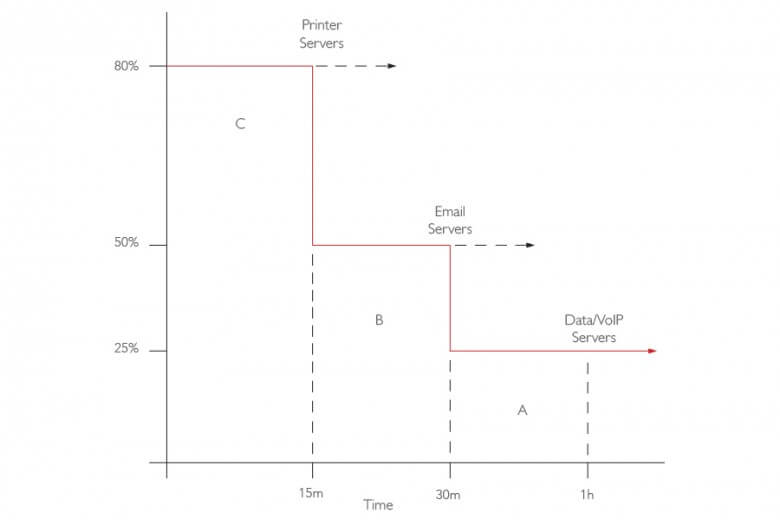News
What is a Power Failure?
A power failure is the temporary loss of electricity supply to an area, lasting from a fraction of a second to several days. It may affect a single building or entire regions and can be caused by weather, equipment faults, or other disruptions.
Electricity powers almost everything we do, from running computers and machinery to keeping the lights on and heating working. When it stops, the effect can be immediate and costly, which is why understanding what causes power failures, how they happen, and how to protect against them is essential.

Understanding Power Failures
In simple terms, a power failure is an interruption or complete stop in the flow of electricity. Sometimes this is very brief, with the supply returning automatically, and other times it can be prolonged, requiring engineers to repair damaged infrastructure before power can be restored.
These interruptions can be partial, affecting only certain circuits or areas, or complete, shutting down power to entire buildings or regions. The duration depends on the cause, a blown fuse in a local substation might be fixed in minutes, while major storm damage could take days to resolve.
Common Causes of Power Failures
While power cuts might feel unpredictable, they usually fall into a few common scenarios. Severe weather is one of the leading causes, high winds, snow, ice and flooding can damage power lines, knock over poles or short-circuit equipment. Natural disasters such as earthquakes, hurricanes and wildfires can destroy infrastructure on a much larger scale, leading to widespread blackouts.
Power failures can also be caused by falling trees and branches, which often happen during storms, as well as wildlife interfering with equipment , squirrels, birds and other animals can cause faults simply by coming into contact with live components. Technical issues, such as equipment breakdowns, grid overload from high demand and even human error, can also trigger outages. In recent years, cyberattacks targeting power infrastructure have become another emerging risk.
Learn more in our Beginner’s Guide to UPS.
Types of Power Failures
Not all power failures are the same, and they can be grouped into three main types:
- Transient fault – A very short interruption, often lasting only milliseconds, typically caused by a temporary fault on a power line. Power is restored automatically once the fault clears.
- Brownout – A sustained drop in voltage that can last hours or even days. This can cause lights to dim and may damage sensitive equipment if not protected by an Uninterruptible Power Supply (UPS) system.
- Blackout – A complete loss of power that can last from seconds to several hours or more. Blackouts are the most severe type of outage and can be difficult to recover from without proper backup systems in place.
The Impact on Businesses
Electricity is the backbone of modern business operations. Without it, production stops, offices go dark, and IT systems shut down. Even short interruptions can lead to lost data, missed deadlines, reduced productivity, and revenue loss. The longer the outage, the greater the damage and many companies underestimate just how costly even a single power failure can be.
For example, if a sudden blackout occurs without a backup solution in place, any unsaved work or data in temporary storage (such as a computer’s memory) is instantly lost and often unrecoverable. In industries where uptime is critical, such as healthcare, manufacturing, or finance ,this kind of disruption can have severe consequences.
How to Protect Against Power Failures
One of the most effective ways to safeguard your business from the impact of an outage is by installing an Uninterruptible Power Supply (UPS). A UPS automatically switches to battery power the moment it detects a loss of mains electricity, keeping your critical equipment running without interruption.
This backup power not only buys you time to save work and shut down systems safely, but it also protects against dangerous voltage spikes that can damage electronics. The length of time a UPS can run your systems, known as runtime, depends on the model and battery size, so it’s important to choose a system based on your business needs. Ideally, all vital equipment, from servers and network switches to essential machinery, should be connected to a UPS.
Regular UPS maintenance is also crucial, ignoring battery warnings or skipping service checks can leave your business vulnerable when you need backup power most.
What to Do During a Power Cut
If you experience an outage in the UK, you can report it or get updates by calling the national number 105. This service, run by network operators, lets you find out the cause of the outage, how widespread it is, and when power is likely to be restored.
Discover more about UPS maintenance and seasonal preparation.
Is It Time to Plan for Power Protection?
Most of us take electricity for granted, but it only takes one unplanned outage to highlight how dependent we are on it. In today’s world, where almost every aspect of work, communication, and security relies on a stable power supply, having a backup plan isn’t optional, it’s essential.
Installing a UPS from a trusted provider like Adept Power Solutions ensures you have the protection you need to keep your business running, even during unexpected power failures. Whether you need a few minutes of runtime to safely shut down systems or extended backup for critical operations, we can help design the right solution.
Contact us today to discuss your power protection needs and get expert advice on choosing the right UPS for your business.

